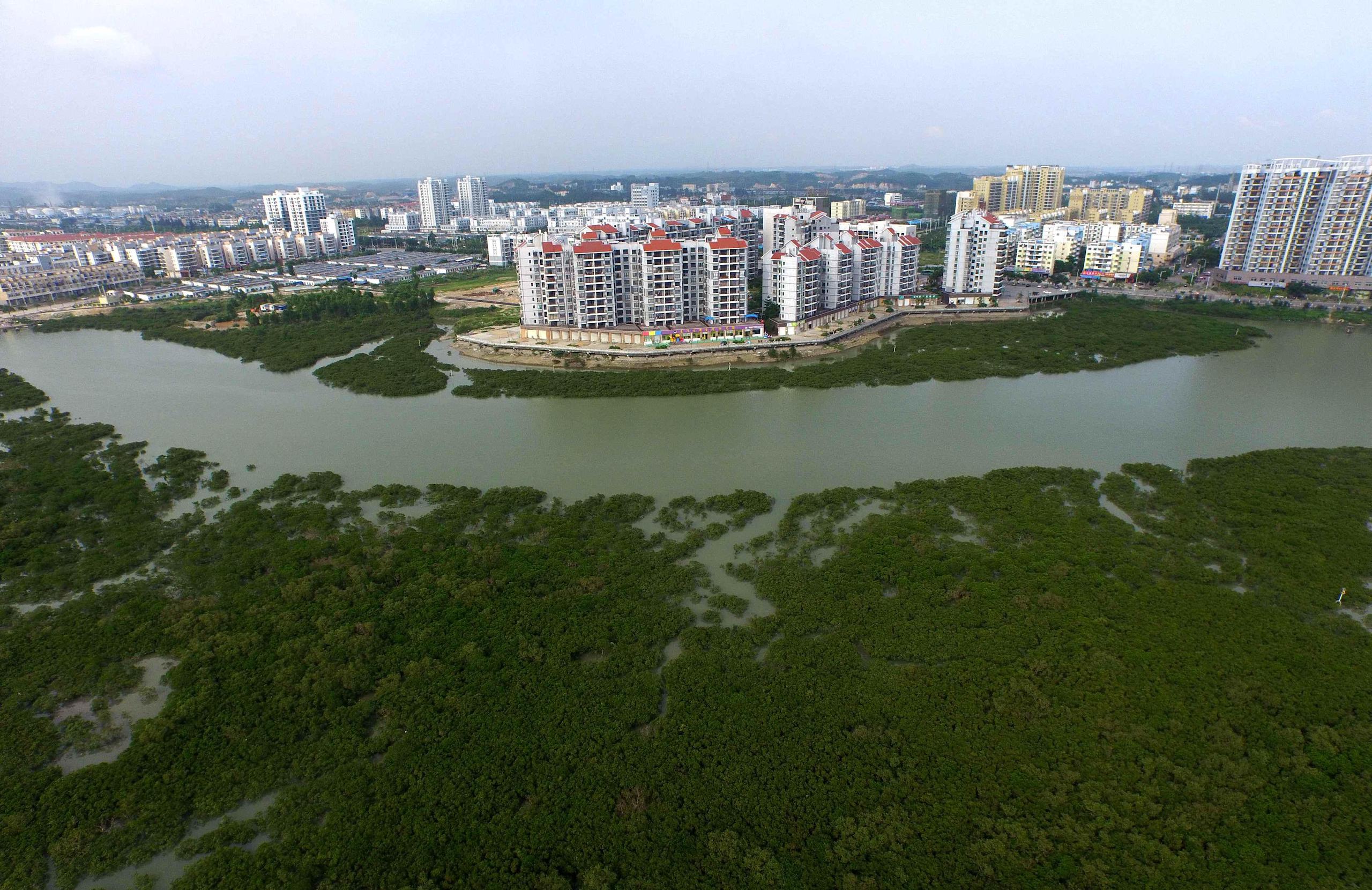Ecological conservation redlines demarcate areas that provide important ecological services with the aim of protecting them. These include shallow coastal waters, wetlands, glaciers and forests.
China’s ecological redlines policy is creating new protections and a model for sustainable land-use planning that has important lessons for any country wishing to meet the objectives of the Convention on Biodiversity (CBD) and the Paris Agreement on Climate Change.
In 1998, catastrophic floods hit the Yangtze River valley, much exacerbated by overdevelopment of grasslands and wetlands that would otherwise have helped absorb the floodwater. China responded in 2000 by piloting a policy of ecological conservation redlines. Between 2010 and today, over a quarter of the country has been included in the redline – meaning put under protection or sustainable management. The aim is to protect almost all of China’s endangered species and their habitats, with simultaneous gains for the prevention of floods and sandstorms, provision of clean water and other ecosystem services. Implementation of the policy is overseen by the Ministry of Ecology and Environment and supported through fiscal transfers from the national government, payments for watershed management and other market-based instruments.
The role of redlines
China’s framework for ecological management includes nature reserves, national parks and the “Three lines & one list” system. The three “lines” here are ecological redlines, a lower limit on environmental quality, and an upper limit on resource usage. Meanwhile, an “environmental access list” determines what activities are permitted in the given area. But implementation and legislation for redlines is lagging behind the other parts of the system. The unclear legal status of the redline system has the potential to create tensions between different policies and causes difficulties for those implementing them on the ground.

In May this year, the province of Guizhou removed 17 wind turbines that had been built within a redline area, highlighting issues with coordination between developing renewable energy and the redline system. Responding to questions, the Ministry of Natural Resources said small-scale, existing renewable energy installations could be allowed within a redline area, but new construction should be avoided. With no national rules on implementation of the redline system, different provinces take different approaches. This can create uncertainty on whether and what sort of projects are compatible within redline areas.
In June 2018 the central government announced the Three lines & one list policy. Of the “three lines”, only the redline system features actual lines on the map. Overall, the policy acts as a basis on which to manage use of natural resources and restrict certain industries.
Shenzhen environmental authorities recently published a consultation draft of proposed measures under the Three lines & one list policy. This included definition of the three lines, with the redlines being demarcations of geographical areas, and the environmental and resource limits being specific targets for indices such as water quality in rivers, air quality (levels of PM2.5), energy consumption and protection of natural coastlines. The draft divides Shenzhen into a grid of 220 zones, with a further 26 coastal water zones. Each segment of that grid has corresponding requirements and restrictions for use by industries.
The “three lines” determine what types of project are permissible in any segment of that grid. The authorities can refer to the environmental access list and reject projects which do not meet the requirements. In practice, the environmental quality limits are applied in urban areas, as that’s where pollution is worst and reducing environmental damage is urgent. The limit on resource-use puts a ceiling on exploitation of resources, and those are being used both in urban and semi-urban areas, while redlines cover areas with valuable or vulnerable ecologies.
But the lack of a solid legislative basis for the redline system still gives local governments plenty of room for manoeuvre. Any firm wanting to build within a redline zone has to use the environmental impact assessment report to explain why this is unavoidable. A firm may argue that locating elsewhere would be too expensive, so they have to build within a redline area. It becomes about “economics”, rather than the “environment.” Of course, conflict between environmental quality and economic cost is a central problem of land use planning throughout the world, and is not a peculiarly Chinese problem.
Draft redline rules have been developed
The Ministry of Natural Resources has said that rules on implementing the redlines are being drafted. Early this year, a consultation draft of those rules was circulated. The 24 articles of that document provide detailed rules for implementation of the redline system, covering placement, management, adjustment and supervision.
Although the Ministry’s draft with some way to go before being finalised, some environment officials and NGOs suggest further improvements may be needed to tackle some complex issues. For example, in the draft the ministry defines, manages and supervises the redline system, giving it the right to oversee its own work. It also delegates approval for adjustments to redlines to local governments to accommodate significant national projects. Coordination of central government intent and local interpretation and implementation is a key tension in Chinese system of governance.
Source: This is an edited version of an article from China Dialogue, 29 July 2021
https://chinadialogue.net/en/nature/how-to-strengthen-chinas-ecological-redlines/
: